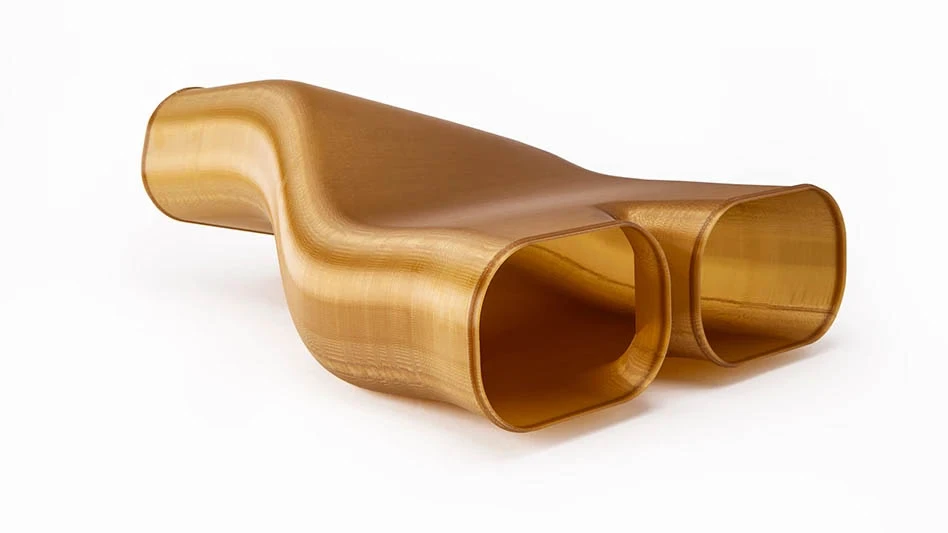 Aluminum is the material of choice in numerous industrial applications where a high strength-to-weight ratio is important. It is also an attractive material because of its resistance to corrosion, its low density, and the fact that it is malleable and ductile. Aluminum is often used due to its relatively high conductivity. An advantage in some applications, that conductivity causes significant problems during machining. This is especially the case when using one of the most precise and cost-effective machining processes available to industry – photochemical etching – leading to significant issues in terms of etching accuracy and repeatability.
Aluminum is the material of choice in numerous industrial applications where a high strength-to-weight ratio is important. It is also an attractive material because of its resistance to corrosion, its low density, and the fact that it is malleable and ductile. Aluminum is often used due to its relatively high conductivity. An advantage in some applications, that conductivity causes significant problems during machining. This is especially the case when using one of the most precise and cost-effective machining processes available to industry – photochemical etching – leading to significant issues in terms of etching accuracy and repeatability.
Photochemical etching overview
Photochemical etching has been a machining technology for more than 50 years, but it is still a relatively low-profile process. Its practical use in a variety of manufacturing scenarios, with an ever-broadening number of materials, is one of industry’s best kept secrets.
Commonly misrepresented as a prototyping technology, photochemical etching is a versatile and increasingly sophisticated metal machining technology that can mass manufacture complex and feature-rich metal parts and components.
Using photo-resist and etchants to chemically machine selected areas accurately, the process is characterized by retention of material properties, burr-free and stress-free parts with clean profiles, and no heat-affected zones.
Coupled with the fact that photochemical etching uses easily re-iterated and low-cost digital tooling, it provides a cost-effective, highly accurate, and speedy manufacturing alternative to traditional machining technologies such as stamping, pressing, punching, and laser and water-jet cutting.
However, for any machining technology to remain viable and relevant in modern and innovative manufacturing projects and environments, it must adapt to the needs of industry. Specifically, machining technologies these days must be able to work to extremely high tolerances, and on more modern metals which are sought after in various industrial applications.
As such, companies such as Precision Micro have invested in research and development in the field of photochemical etching, focusing huge amounts of time and money to refine the process for use on aluminum, a metal that is notoriously difficult to work.
Many companies that have used traditional manufacturing processes on aluminum will be familiar with some issues such as its reflective nature – which makes laser cutting problematic – and the fact that aluminum coats dies which makes punching unreliable.
Aluminum – a versatile material
Aluminum alloy also is the material of choice in a number of industrial applications due to the fact that it is corrosion resistant, light, and strong. In this way, it exhibits many of the attributes of titanium, the strength-to-weight ratios of each metal being a key attribute. However, aluminum is significantly cheaper than titanium. This lower cost is not so much a product of its abundance and ease of production (it is, in fact, quite expensive to extract from the ore bauxite) but a feature of its recyclability. It has been suggested that within 20 years there will be no need to mine for more aluminum as enough will have been mined and will be continually recycled to meet demand.
 Aluminum is also considerably less dense than titanium. Whereas titanium is stronger and more corrosion-resistant than aluminum, it has a relatively low fatigue limit, making it the material of choice in numerous aerospace applications, and the automotive, transportation, and building sectors.
Aluminum is also considerably less dense than titanium. Whereas titanium is stronger and more corrosion-resistant than aluminum, it has a relatively low fatigue limit, making it the material of choice in numerous aerospace applications, and the automotive, transportation, and building sectors.
Aluminum’s low density is the key, coupled with another characteristic, that it is an excellent conductor of heat and electricity, making it a preferred material for cabling and heat exchangers.
But this characteristic is also its Achilles heel when it comes to working the metal. For example, in the photochemical etching process, aluminum reacts with the corrosive chemistry and becomes exothermic, releasing heat energy. This has a secondary, incidental effect on the efficiency and accuracy of the photochemical etching process.
Working with aluminum
So it is its exothermic nature that introduces hurdles for the efficient application of photochemical etching processes to aluminum, as well as the fact that aluminum is a corrosive-resistant metal, and photochemical etching is a machining process based around selective corrosion.
Aluminum is amphoteric in nature, meaning that it will react with acids or alkalines. As such, it can be photochemically machined using either acidic or alkaline etchants, but use of either presents challenges.
The key to successful photochemical etching is strict process controls. The highly exothermic reaction of aluminum to the etching process can in some instances destroy the photo-tool and create a rough etch. Effectively, the exothermic reaction causes the resist to pull away from the aluminum sheet, allowing the etchant to seep under the resist and compromise the etch. This leads to a rough, jagged, granular edge, a long way away from the smooth and straight etched profiles typical of the photochemical etching process.
Some research into the efficient etching of aluminum has focused on the etchants used, some on temperature control, and still more on cleaning and preparing the metal.
Due to the exceptional demand for aluminum in a variety of industrial applications, and the requirement for a machining process that is both repeatable, consistent, and overcomes such issues as already highlighted with laser cutting and punching, Precision Micro has invested more than $800,000 on lamination equipment to improve the adhesion of the resist to the aluminum.
In addition, the company has used its five decades of experience in photochemical etching to refine and adjust the concentrations of the corrosive chemistry used on aluminum to overcome some of the inherent issues involved.
 Such adaptations of chemistry have proved satisfactory for Precision Micro’s numerous client projects – with additional emphasis on a range of other factors including process speed adjustment and temperature control. All these factors are inter-related, and one can have a negative impact upon the other. For example, adjusting the speed of etching can lead to resist lift, so optimizing the process is a balancing act, success based on considerable expertise honed over many years and numerous projects.
Such adaptations of chemistry have proved satisfactory for Precision Micro’s numerous client projects – with additional emphasis on a range of other factors including process speed adjustment and temperature control. All these factors are inter-related, and one can have a negative impact upon the other. For example, adjusting the speed of etching can lead to resist lift, so optimizing the process is a balancing act, success based on considerable expertise honed over many years and numerous projects.
Through the reconfiguration of machines, chemistry, and process parameters, Precision Micro has been involved in countless successful projects involving photochemical etching of aluminum.
One such was work undertaken for a leading helicopter manufacturer that involved the etching of air intake grilles. This was a not a mass volume project by any means, and the parts were certainly not as feature-rich as many that Precision Micro works with (photochemical etching typically being associated with high-volume runs of complex parts). However, etching was the chosen manufacturing process as other alternative technologies introduced stress into the components. Because this was an aerospace application, weight was a key factor, so the client demanded the use of aluminum due to inherent weight savings, and the project was successfully completed due to Precision Micro’s combination of chemistry, process, and machine adaptations.
In another aerospace application, Precision Micro successfully applied similar techniques to the manufacture of numerous different aluminum parts that made up an aircraft cabin dehumidifier. Precision Micro produced etched channels and precision apertures in many of these parts, photochemical etching being the manufacturing process of choice since stamping would have been prohibitively expensive due to the need for 36 different stamping tools. In addition, stamping would not have been able to achieve the necessary profile cross-sections that were essential to achieve the flow and thermal profile specified. Also, photo-chemical etching meant that there were no re-cast layers which are typical of some machining processes such as EDM.
Challenges met
Across industries, aluminum is now so often the material of choice that any metal manufacturing process must be able to efficiently and precisely work the material. Photochemical etching is one of today’s most cost-effective and accurate manufacturing technologies, especially for the high-volume manufacture of complex and feature-rich products and components. The inherent accuracy of the process, the fact that it induces no stress in worked materials, and that the process provides considerable tooling cost savings, means that OEMs are clamoring for the process in a variety of metals.
The nature of aluminum is such that it has until recently provided significant challenges for photochemical etching practitioners. However, Precision Micro has developed and successfully applied photochemical etching to aluminum in a variety of real industrial applications. Through a mixture of experience with the technology, massive investment in equipment and research into the etching chemistry, and optimization of process control, Precision Micro is one of the few companies able to provide consistent, accurate, and replicable manufacturing of aluminum parts through photochemical etching.
Precision Micro
www.precisionmicro.com
About the author: Albert Tsang is the Technical Manager at Precision Micro, Birmingham, U.K., with 13 years’ experience at the company. He can be reached at 44.0.121.380.0100 or info@precisionmicro.com.

Explore the July 2014 Issue
Check out more from this issue and find your next story to read.
Latest from Aerospace Manufacturing and Design
- July is for learning – so drop in for this month’s second Manufacturing Lunch + Learn
- Essential strategies to protect your data
- NASA selects instruments for Artemis lunar terrain vehicle
- Twin-cutter boring head
- Bell awarded funding for X-plane build phase of SPRINT program
- Shaft coupling clamps
- #46 Lunch + Learn Podcast with SMW Autoblok
- Gleason Corp. acquires the Intra Group of Companies





